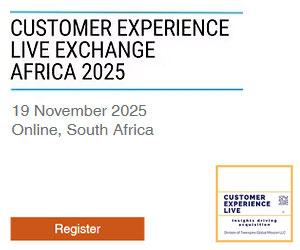I’ve been doing the rounds assessing the outputs of the latest two cohorts to participate in the P&Q Challenge. Zooming through the tube early one morning to my next destination, I had a light bulb moment about what I’ve been witnessing. One which allowed me to reframe the way I usually think about contact centres and their challenges. So I thought I’d share it with you to see how you react.
As context, I need to confess to a certain conflict I feel throughout the P&Q Challenge.
On the one hand, I have nothing but admiration for the persistent, diligent and often downright imaginative approach taken to put P&Q ecosystem style thinking into practice. Relative to their start point, the vast majority have already made great strides by the time I get to visit. The roadmap they share with me shows they intend to travel even further over the coming months.
On the other hand, I’m absorbing, distilling and outputting tales of the great digital adventure we are collectively engaged in. Dip into the growing library of digital transformation, digital disruption or customer experience use cases and you have to admit things are starting to look quite different. As in – what’s the difference between the B&W four channel TV of old, and the app-based, multi-screen TV series binging many of us now indulge in?
Those waving the ‘onward and upward’ flag have no truck with the B&W telly, which is how the contact centre comes over to them. It’s something done by previous generations. Of course this flag waving lends itself to oratory platforms such as conference keynotes and self proclaimed thought leadership blogs. It’s all part of setting out your credentials as being in tune with the times. So add a pinch of salt maybe.
Nonetheless, it seems we have two parallel universes.
The digital train is taking us into unknown territory. No doubt that today’s six-year-old is going to be challenged over her lifespan as a human being in quite new ways if things evolve as it seems they might.
In contrast, the contact centre convoy seems light years and a few galaxies behind. So when I see genuine movement from a P&Q inspired initiative, what I’m really celebrating is a few centimetres travelled relative to the many metres covered in the digital fast lane.
Who Do You Trust?
But I have an optimism that this might just change over the next few years as contact centres start to exploit a new found momentum which the P&Q Challenge, amongst other things, is helping to catalyse.
My light bulb moment was to realise that trust is the central theme and issue at stake. Or rather the current lack of it. The impact of trust being absent as a social lubricant has been to freeze frame contact centres and thus make any progress tortuously slow.
Here is how I reached that conclusion.
One of the cohorts I’ve been facilitating is an insurance group. Pretty much the top tier of the industry has participated. Thus it is no coincidence that stories I’ve heard during the on-site accreditations have been common ones. In fact the one that has produced most grins around the table is of the quality team’s relationship with Compliance becoming a more mutually trusted one.
This is a thorny topic. Sitting in the shoes of a compliance team, the contact centre presents a ‘clear and present danger’ to career reputation. Who knows what they have told customers and what impression they have left in that customer’s mind? If the big bad wolf of a regulator was to sniff that out and conclude this was systemic and therefore punishable behaviour, then it’s probably P45s all round and a blot on the CV.
It follows the only way to minimise that risk is to assume nothing and audit the heck out of everything. As Andy Groves (Intel’s legendary CEO) used to say, “only the paranoid survive”. This understandable instinct translates into an uncompromising form of remote management. As a result, you don’t screw with Compliance; having gained a reputation for being pretty much beyond challenge in terms of whatever methodology they choose to ensure their mission.
If Compliance swoop in without notice and surround your desk at 7.45am to check you out and dig deep into your recorded customer calls, that’s their prerogative. Moreover, as one of them was reported to have said, they don’t need to care about any negative impact on customer experience that their scripts and procedures might be having since that not something they are paid to worry about.
The logic to date for suffering all this has been that if this saves the insurer a £20m fine from the regulator, then who cares if no-one likes it.
Of course, few advisors or team leaders actually know the individuals within Compliance. Instead the public face of Compliance is the quality team whose remit and wiggle room has been entirely mandated and controlled by ‘them upstairs’.
As a result, quality teams feel under-loved and slightly nervous in dark corridors. They are known for ‘marking you down’, which by any motivational logic, completely sucks. Especially in the face of attempting to drive up employee engagement which is increasingly fashionable in service touch points these days.
The decision to judge an entire customer interaction as a failure is based on cast iron, tick box logic. Customer context, which is core theology in the world of customer experience, has no votes in this world. Moreover the language of failure is debilitating. It reminds everyone of school. Finally, do normal people ever describe their conversations as failures?
These tensions are not lost on quality teams who often feel conflicted. The tension is caused between this intransigent remit and a growing customer experience culture that has infused itself into contact centre ambitions. Admittedly, it still has some way to go in the instinctively conservative world of insurance (aka “you don’t stay in business for over 350 years by taking undue risks”). But change is a-coming. Maybe we will see Chief Customer Officer roles being created in the not too distant future.
So when we sit in workshop one of the P&Q Challenge and ask the simple but catalytic question ‘what is quality?’, the conditioned response is to trot out Compliance’s definition and priorities. Six months later at the end of the Challenge, it seems much has changed.
Some brands have promoted customer experience measures to have equal status with traditional compliance metrics. Some start using their voice of the customer data in a smarter way by making it part of a weighted assessment of what has and has not worked.
But the real transformation lies in the new relationship that has been struck up with Compliance. As in all frozen relationships, the way forward is to talk so as to understand each other and thereafter become aligned by rediscovering a common purpose which replaces suspicion with trust.
If the P&Q Challenge soapboxes about anything, it is the message that things work better when everything in an ecosystem is aligned. In reality, this means getting stakeholders onto the same page.
Lack of trust is what froze the Quality–Compliance relationship in the first instance. And when things are frozen, nothing can evolve; at least not with any real momentum. To me this explains why the pace of change management in contact centres is so glacially slow. Trust as the social lube is missing from the party.
But It’s Worse Than That…
Moreover, losing trust is contagious. In other words, it is not confined to the relationship between Compliance and quality teams. It is also endemic between advisors and contact centre leadership.
Can we trust them to work at home without oversight? Can we trust them to say the right things without a script? Can we trust them to be self motivated without carrot and stick supervision? The self fulfilling prophecy is no, so let’s not take that risk.
The evidence from P&Q is that the historic view is pretty damning in terms of what advisors could bring to the party. Over the three years we have run cohorts, it occurred to no-one, before being challenged, that advisors are sources of intelligent insight.
Yes there maybe a half hearted digital suggestions box scheme in operation, but the principles of running customer service under the principles of co-creation and outside-in insight is still over the horizon.
Hence cost to serve, NPS improvements, Digital First aims are all executed top down with the advisors expected to passively absorb the latest stuff from their ‘elders and betters’.
No wonder few care to mention that they work in a call centre. What about a sense of pride in being part of something amazing that is changing and challenging you as an individual? When is that going to become the contact centre leadership’s default mission for the rest of the team?
Till then, it’s another frozen relationship. Leaders don’t trust advisors to do the right thing or to be a source of innovation. Equally, leaders are not trusted to develop anyone’s potential.
That view is now being challenged. Some team leaders who still prefer to add value through supervision are feeling the heat of becoming redundant. Those who are re-creating themselves as facilitators and coaches are moving with the tide.
Advisors are being liberated from the narrow view they were held under. Let’s hope they soon start to feature in enterprise conversations about innovation as acknowledged experts in customer priorities.
Tracking back a few steps in this transformation story when things were still frozen, it has to said that the final victim of this lack of trust was, of course, the customer.
Many contact centres still have a lot of work to do convincing their customers that they have their best interests at heart. Do they trust that contact centres have worked tirelessly to make engagement easy, effective and personalised? Still not the first words that trip of the tongue when you hear feedback about a call centre experiences.
So that’s it. My meditation on trust. What do you think? My conclusion is that more of it would turbo-charge contact centre transformations.
Takeaways
If you are an action list kind of a person who expects clear takeaways after reading 1,700+ words, then I can oblige with the following:
- Get Compliance and Customer Experience leaders around the table and ensure that quality teams, advisors and customers benefit from an aligned approach. A question to get the debate going is to wonder exactly how quality management and customer experience are related. Same as, distinct from or otherwise connected – let the discussion begin.
- Spend some time listening to ideas people in the contact centre have about who is responsible for quality and how that is best delivered. For fun you also might ask for some clarity around what they think quality actually means.
- Resist the temptation to ignore this and open up a conversation with advisors about identity, value and what matters to them. Even better, then experiment with what you learn.
- Think about trust. What creates it, what kills it, what it unlocks. Once you’ve finished meditating on its value, empower the rest of the team with a discovery session on ‘Trust as Phase One in Our Contact Centre Transformation’.
Author: Guest Author
Published On: 26th Jan 2016 - Last modified: 26th Apr 2017
Read more about - Archived Content




























